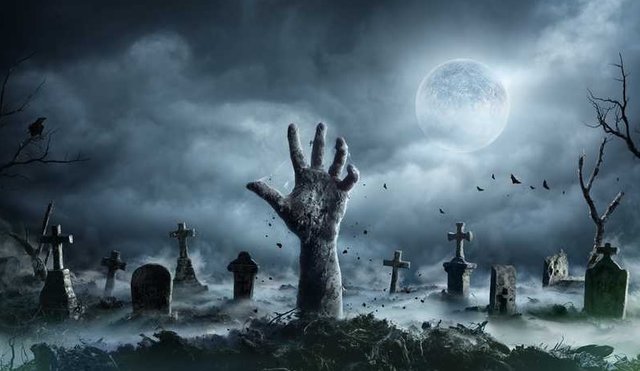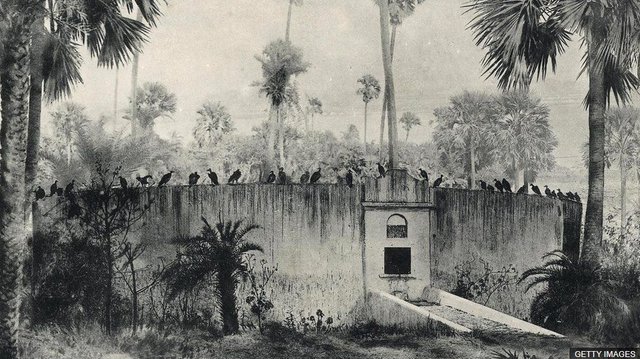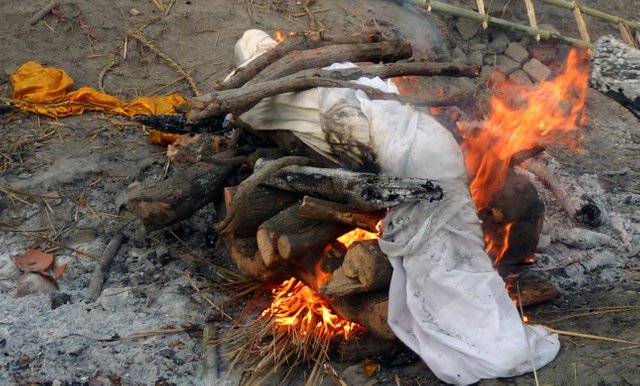Close to the dead after death: what to do with bodies?
Someone was not too lazy and calculated: if burials in cemeteries in 2050 are as popular as in 2020, humanity will have to allocate about 6500 km² of land for this business. For comparison: Malta — 316 km², Andorra — 468 km², Cyprus — 9251 km², and Montenegro — 13,812 km².
Twenty territories of Malta or half of Montenegro, the dead will be taken from the living in the next 30 years!
It is estimated that over the past five millennia, approximately 100 billion people have lived and died on Earth. And the living 7.6 billion are inevitable, and already in this century, they will join them, whether we like it or not.
Today on the planet, about 15 billion people buried under it, whose remains are designated, account for 7.6 billion living inhabitants of the earth. Those. There are twice as many dead people on the planet as there are living people.
What is humanity to do with all these dead bodies?
If somewhere in the countryside land for burial is still relatively easy to find, then in the rapidly growing megacities it simply does not exist. The traditional methods of burial of the bodies of the deceased cease to work: space prices, resources are exhausted.
And the problem, it turns out, is not only land scarcity.
The rituals and funeral traditions of today are radically different from those originally conceived. Ceremonies of the burial of the bodies of the dead all the time are complicated and overgrown with many additional elements, which makes the soil completely unsuitable for agriculture.
Modern coffins are not a few pine boards, but a fundamental product made of tens of kilograms of wood, metal and composite materials for interior decoration.
On average, the construction and design of a grave complex will require approximately 1360 kg of building materials, and the embalmed deceased even after 30-40 years do not think to decompose and look like they were buried last week. Which gives rise to a new problem of the inability to reuse old graves.
But one way or another, everything decomposes over time, and an incredible amount of toxic, often poisonous substances circulate in the soil of the cemeteries, mixing with groundwater.
Cremation, towers of silence, funeral pyres of Varanasi
A reasonable alternative to being buried is burning the remains or other disposal of mortal flesh.
The option with crematorium and columbaria is already well mastered by mankind, but exotic rituals of farewell to the world are also found.
The custom of "heavenly burial" in Tibet is the so-called giving of alms to birds, when the bodies of the deceased are left in the open for vultures. And in neighboring India, there was a shortage of birds of prey, and the local Zoroastrian community had to switch to using solar energy concentrator mirrors - a practice that seemed to come from dystopia.
Or the traditions of Varanasi, a city in India, where funeral fires burn day and night, where not death comes to man, but man comes to death. A few cubic meters of sandalwood (by the way, quite expensive), payment for the services of a specially trained stoker from the lower castes - and a guaranteed place in a better world. Hinduism gave those who profess it a method of 100% achievement of moksha.
Almost every one and a half billion Hindus wants to die in the holy city of the dead Varanasi or burn their body here. Open air crematorium smokes 365 days a year and 24 hours a day. Near electric crematoriums where they burn the poor, who did not raise money for firewood. After burning, the remains are dumped into the sacred river Ganges. How is Vysotsky ?: "The Indians came up with a good religion ...".
But what about the Jews and Muslims for whom the cremation of the dead is unacceptable? The body must be interred - and that’s it!




The discussion on the environmental impact of traditional burial practices is eye-opening. It's clear that we need to rethink how we approach this aspect of our culture, considering the strain it places on both land and the environment.greenfarewells.com provides an alternative that aligns with eco-conscious values. Their offerings allow us to honor our loved ones in a way that's respectful while being kinder to our planet.As we face these challenges, it's essential to consider more environmentally responsible ways of saying our final goodbyes.